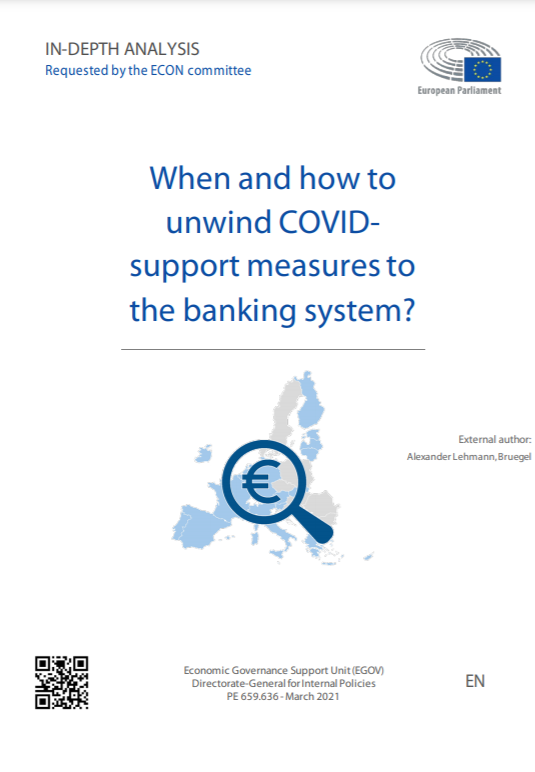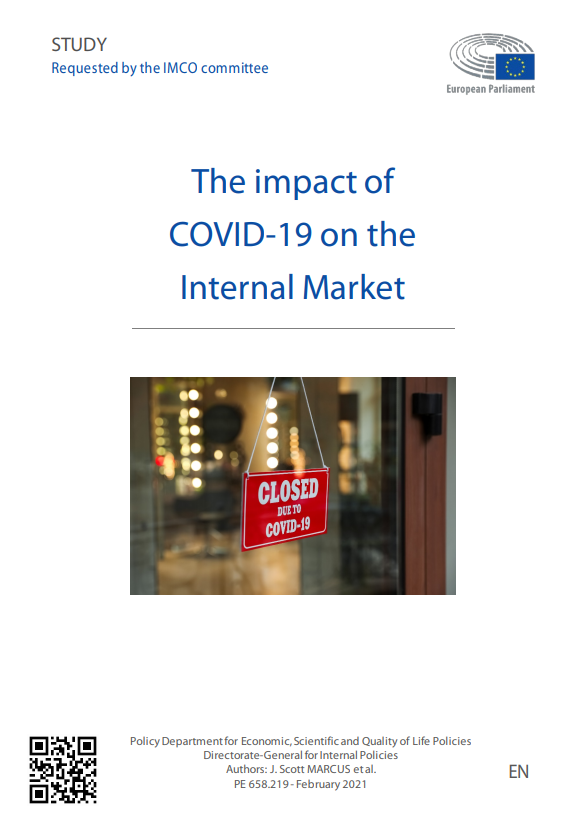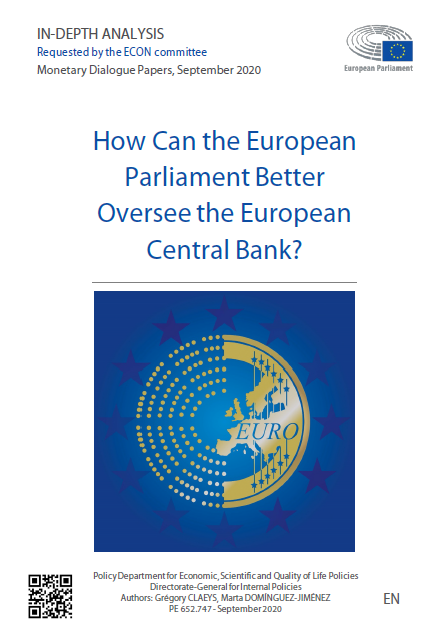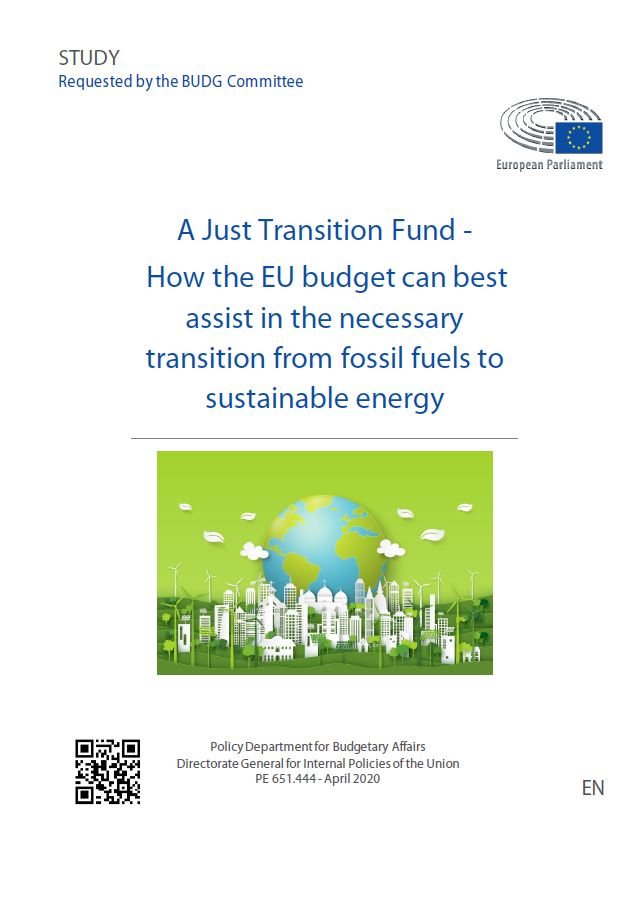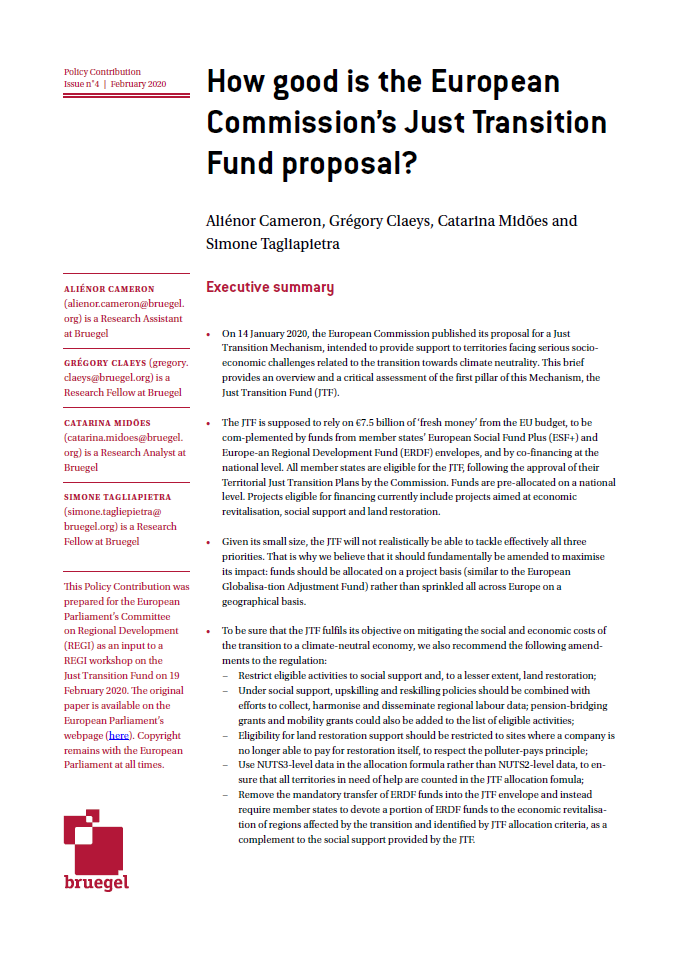Blog Post
How unequal is the European Parliament’s representation?
The European citizens’ relative lack of interest in the European Parliament is often blamed by critics on its inherent inequality of representation. How much change would produce an acceptable level of equality of representation? In the charts at the end of this post, we compare the skewed nature of the European Parliament’s representation of European voters with other lower houses of large or medium-sized democratic polities.
The European Parliament election of May 22-25, 2014 has several unprecedented features. It is the first election under the Lisbon Treaty. As a consequence, and for the first time, the main pan-European parties – including the center-right European Peoples’ Party (EPP) and the center-left Socialists and Democrats (S&D) – are fielding lead candidates for European Commission President. Turning the election into a presidential horse race was intended to increase electoral participation and enhance the Parliament’s democratic legitimacy, even though it remains to be seen whether voters will actually see things this way.
The European citizens’ relative lack of interest in the European Parliament is often blamed by critics on its inherent inequality of representation. Voters in smaller member states are overrepresented. Germany’s Federal Constitutional Court, when ruling on the Lisbon Treaty on June 30, 2009, said that the European Parliamentary election process “does not take due account of equality.” In the Court’s view, this constitutes one of two key factors in the European Union’s “structural democratic deficit,” the other being the European Parliament’s “position in the European competence structure,” i.e. its lack of power compared to other EU institutions.
How much change would produce an acceptable level of equality of representation? Article 14(2) of the Treaty on European Union gives disproportionate weight to smaller countries, stipulating that “no “Representation of citizens should be degressively proportional, with a minimum threshold of six members [of the European Parliament] per [EU] Member State. No Member State shall be allocated more than ninety-six seats.” But the treaty does not provide a specific formula for representation, and the exact composition is to be adopted by unanimous decision of the European Council. The latest apportionment decision was adopted on June 28, 2013 (European Council Decision 2013/312/EU), in the run-up to the accession of Croatia as the EU’s 28th member state.
In the charts at the end of this post, we compare the skewed nature of the European Parliament’s representation of European voters with other lower houses of large or medium-sized democratic polities. The European Parliament is at the low end in terms of electoral equality. For each chamber, the chart shows the distribution of number of eligible voters per representative, from the one(s) representing the lowest number of eligible voters, on the left end, to the one(s) representing the most, on the right end. A flat distribution indicates a high level of equality of representation. A sloped or skewed distribution indicates inequality of representation.[1]
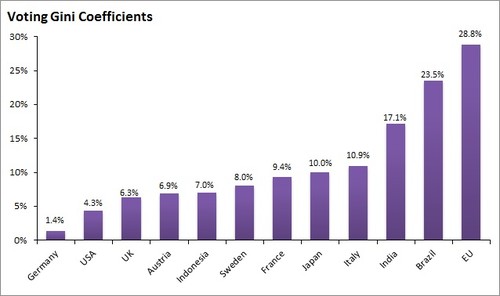
These distributions are summarized in a “Voting Gini Coefficient,” akin to the familiar cross-country comparative measure of inequality of income. Here the Gini coefficient measures not income inequality, but voting power inequality due to skewedness of representation across territorial subdivisions of the relevant polity.[2] A high Voting Gini Coefficient suggests a high degree of voting power inequality among citizens eligible to vote.
The comparison suggests that the European Parliament is indeed outside the norm of European countries in terms of equality of representation. In its own way, so is Germany, whose professed commitment to this principle is unparalleled among countries reviewed. Higher levels of inequality of representation may be expected in larger, more diverse polities where the political complexity of federal arrangements leads to awkward institutional compromises, which is definitely the case of the EU. In our sample, higher Voting Gini Coefficients are indeed also observed for the lower houses in India and Brazil, which come closest to the EP on that measure. For example, in Brazil voters from Sao Paulo state are notoriously underrepresented. Yet the US and Indonesia, which are also large and diverse, both display comparatively low Voting Gini Coefficients.
The implication is that the European Parliament would not need to reach a level of representative equality as high as the German Bundestag to join the norm of lower chambers in democratic polities. A modified distribution that would sharply reduce the EP’s Voting Gini Coefficient to a level around 10 percent could be achieved without entirely renouncing the principle of “degressive proportionality,” but would require lowering the minimum of six MEP seats per member state, and thus a modification of the Treaty on European Union.[3]
If such a level were reached, our international comparison suggests that it would no longer be reasonable for the German Federal Constitutional Court or other watchdogs to label the European Parliament’s representative inequality as an element of “structural democratic deficit.” This labelling, however, does not appear unreasonable under the current arrangements.


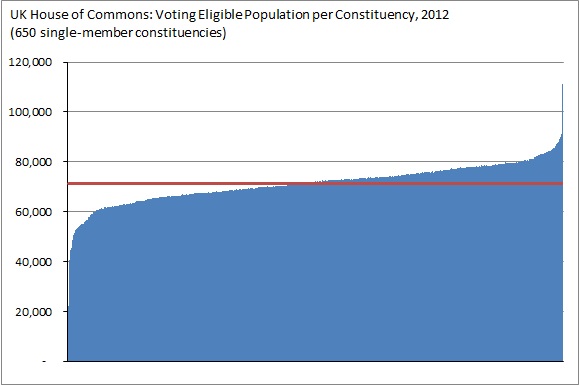
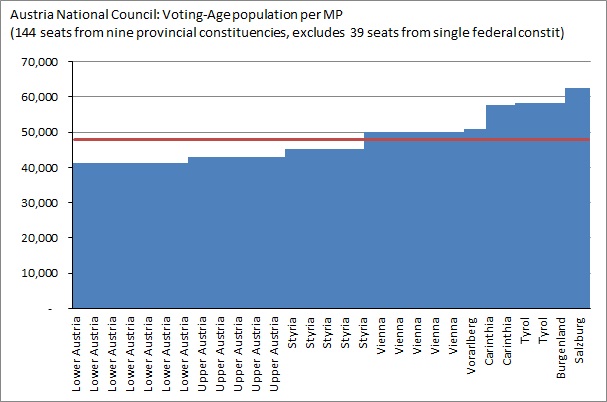
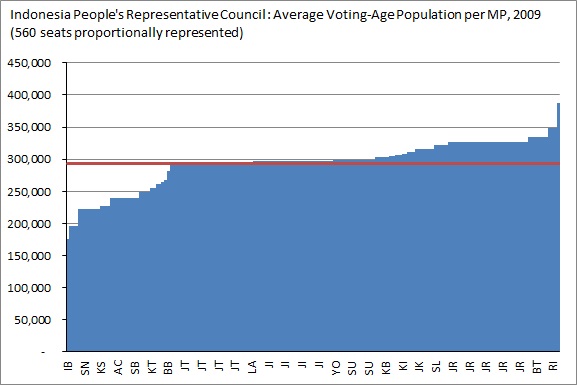

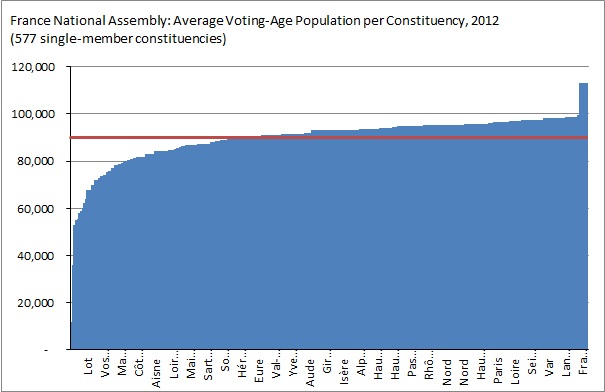
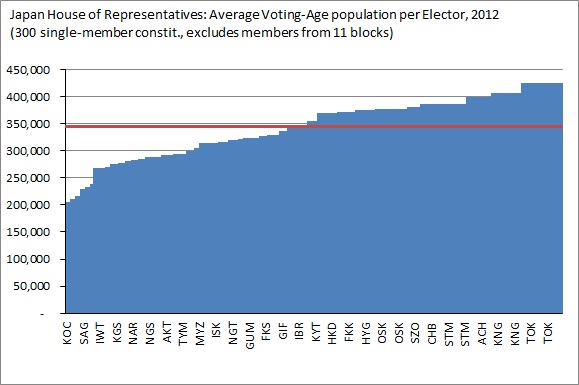
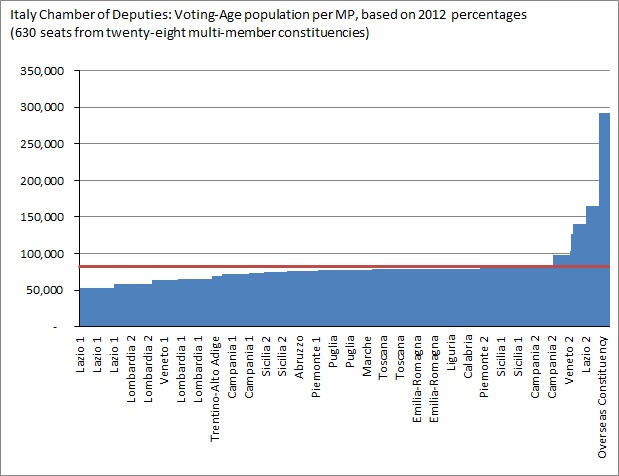
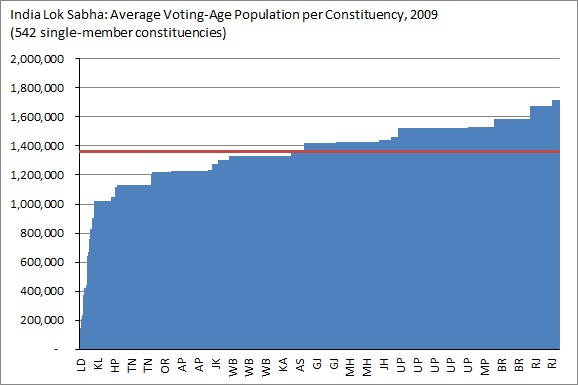


[1] For most countries reviewed, average voting-age population per government representative is based on the total population per relevant territorial subdivision (e.g. state or province), taken from each country’s census bureau, and on the “Voting-Age Population” (VAP) variable from the International Institute for Democracy and Electoral Assistance (IDEA)’s database (http://www.idea.int/). The charts depict the simple division of voting-age-population per territorial subdivision by the number of representatives in the lower house that serve that particular territorial subdivision. The number of government representatives from each subdivision was found in each country’s lower house website. Voting-age population per subdivision was calculated by multiplying the VAP number by the subdivision’s percentage share of the country’s total population. Percentage shares were calculated based on census data for total population from each country’s statistics bureau. IDEA estimates the VAP number based on data from the International Database of the U.S. Census Bureau. IDEA includes all citizens over the age of 18 within the scope of VAP. However, this figure does not take into account legal barriers, such as registration. It also excludes resident non-citizens from the pool. For the United States, we used data from the United States Elections Project at George Mason University (http://elections.gmu.edu/). For the United Kingdom we used the total number of parliamentary electors from the UK Office of National Statistics, which they define as “residential qualifiers, attainers and overseas electors” (http://www.ons.gov.uk/ons/taxonomy/index.html?nscl=Elections+%28Local%2C+National+and+European%29#tab-data-tables).
[2] Gini Coefficients were calculated with the STATA command ineqdeco on the variable “Voting Power.” To calculate Voting Power, each representative’s share of the chamber (1/n, where n equals the number of representatives serving in the lower house) is divided by the voting-age population in the corresponding electoral district. This number represents the amount of representation each individual in the population has in the lower house.
[3] As an illustration, we find a Voting Gini Coefficient of 10.0% with a distribution of seats that is identical to the current one for the larger member states (Germany, France, UK, Italy, Spain, Poland), halves the number of seats of the smallest member states (Malta, Luxembourg, Cyprus and Estonia) from six to three each, and smoothens the distribution with a less sharp reduction in seats numbers for the remaining 18 member states.
Republishing and referencing
Bruegel considers itself a public good and takes no institutional standpoint. Anyone is free to republish and/or quote this post without prior consent. Please provide a full reference, clearly stating Bruegel and the relevant author as the source, and include a prominent hyperlink to the original post.





